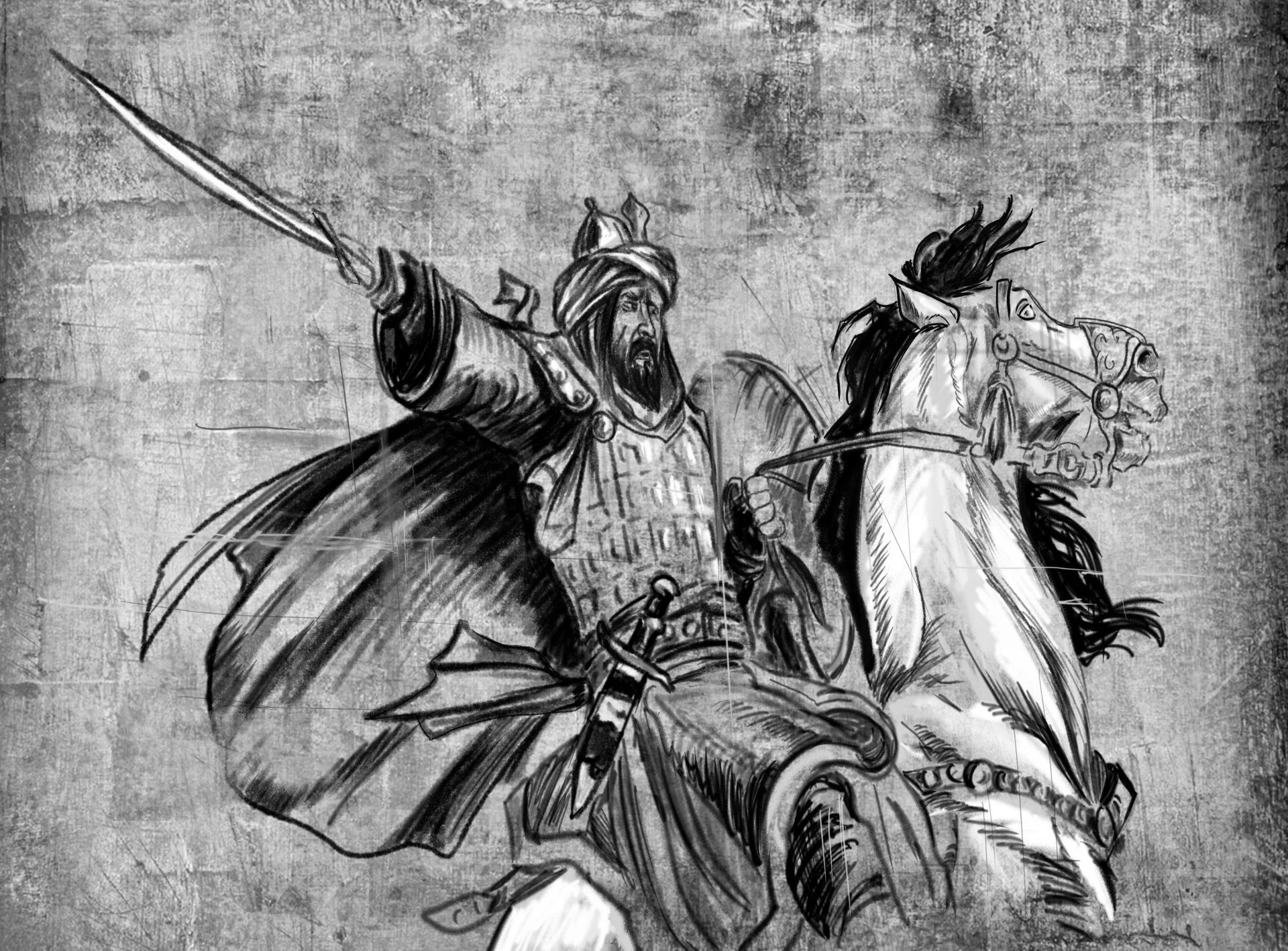The word “Assassin” is a term that was used to describe a fedayeen group within the Nizari Ismailis State, formed when followers of Nizarism split within an Ismailism branch of Shia Islam.
The true origins of the name has been debated for centuries among historians, with one such theory believing that “assassin” has roots in “hashshāshīn” – meaning hashish smokers or users.
The first known use of the term “hashshāshīn” has been traced back to AD 1122, when the Fatimid caliph al-Āmir used it to mean a derogatory reference for the Syrian branch of the Nizaris Ismailis.
The spread of the term was further facilitated through encounters with European Crusaders, whose historians and chroniclers further disseminated it across Europe, telling lurid stories about a warlike sect hidden away in remote mountain fortresses.
ORIGINS
The Nizari Ismailis State was founded by Hassan-I Sabbah who was born around AD 1050 into a family of Twelver Shī‘ah in the city of Qom, Iran. In his early life, Hassan developed a keen interest in metaphysical matters and academia, studying palmistry, languages, philosophy, astronomy and mathematics.
Much of Hassan’s life is speculated or written by third party sources, but the biographer Rashid-al-Din Hamadani records Hassan’s arrival in Egypt to study as a missionary on the 30th of August in AD 1078.
Hassan toured extensively throughout Persia, debating with religious leaders his teachings and views on religious doctrine. His travels reached as far as the shores of the Caspian Sea and the mountains of Alborz in the Rudbar region, where he searched for a base from which to guide his mission.

Around AD 1090, Hassan and his followers took the castle of Alamut using an elaborate strategy of infiltration to fool the garrison. With an established foothold in the region, he extended his influence by conquering strongholds across Rudbar and constructed new fortresses at strategic points for defence and trade.
The rapid expansion of his territory didn’t go unnoticed and Alamut was soon raided by the larger forces of the nearest Saljuq amir, marking the initiation of an endless series of Saljuq-Isma‘ili military clashes.
In less than two years since the capture of Alamut, Hasan and his followers had seized several towns across the region of Quhistan – building the foundation for an independent territorial Nizari state for the Persian Isma‘ilis in the midst of the Saljuq sultanate, for which Hasan would be the ruling Imam.
THE STRATEGY OF ASSASSINATION
In AD 1092, the Saljug launched several major expeditions against the Isma‘ilis in both Rudbar and Quhistan. These skirmishes came to a sudden halt with the assassination of the Saljug Vizier, Nizam al-Mulk, by a Nizari fighter disguised as a Sufi mystic, followed by the death of Sultan Malik-Shah only weeks later.
This disorder allowed Hassan to consolidate his power and seize the strategic fortress of Lamasar (Lanbasar) to the west of Alamut and the stronghold of Girdkuh near Damgan.
Hassan designed a strategy to decentralise the political and military power of the Saljuq sultanate. He established a network of agents or fedā īs, who would infiltrate the households of prominent enemy figures and assassinate them.
This strategy of killings soon became identified with the Nizari Isma‘ilis, marking them in history as a feared elite group of assassins.
AN AFFILIATED CREED
From the 12th century AD, Hassan began to send his own da‘i into Syria to propagate the teachings of the Nizari da‘wa.
However, it would take almost half a century before a Syrian affiliated branch would gain a foothold in the region and establish themselves under the leadership of Hassan’s subordinate, Rashid ad-Din Sinan.
Rashid was able to enjoy considerable independence from the Persian Nizari. Writings even attribute him with a semi-divine status usually given to the Nizari Ismaili Imam and was known as the “Old Man of the Mountain”.

Rashid would play a prominent role in the regional politics of the time, orchestrating various assassination attempts and shifting alliances with Salah al-Din (Saladin), the Crusaders, and other regional powers to safeguard the independence of his community.
The most notable assassination by the Syrian order was of Conrad of Monferrat days before he was to be crowned King of the Crusader Kingdom of Jerusalem in AD 1192.
During the mid-12th century, the Syrian affiliated branch captured several fortresses in the Nusayriyah Mountain range but were later annexed by the Mamluk sultan Baibars.
From then on, the Syrian affiliated Ismailis maintained limited autonomy over those former strongholds as vassals to the Mamluks.
THE MONGOL INVASION
During the reign of the Mongol warlord Güyük Khan (AD 1206 – 1248), the Mongols plan for expansion required the conquest of the Islamic States to reach Western Asia.
At this time, the Nizari Ismaili state was one such significant barrier, fortified with over fifty strongholds that could slow the Mongol advance.
The current Nizari Ismaili Imam Ala al-Din Muhammad joined with the Abbasid caliph and appealed to the European monarchs of England and France to coalesce in a Christian-Muslim Alliance, but the request for an alliance was ultimately declined.
The first Mongol attack on the Nizari Ismailis came in April AD 1253, when many of the Quhistani fortresses were lost to the Christian Mongol general Ket-Buqa. The Mongols eventually reached the founding stronghold of Alamut in AD 1256, changing hands over the next two decades until the Nizari Ismaili resistance was finally crushed.
THE NIZARI ISMAILIS LEGACY
With the fall of the Nizari Ismailis State, the remnants of the Syrian branch were absorbed into the territories of the Mamluk Sultan Baibars, passing on their expertise in exchange for their continued existence.
The historian Yaqut al-Hamawi speculates that the Böszörmény, (Izmaleita or Ismaili/Nizari) denomination of Muslims who lived in the Kingdom of Hungary from the 10th to the 13th centuries AD were employed as mercenaries by the Kings of Hungary.
Dr. Ismail Balic writes in “Traces of Islam in Hungary” that “Islam was first brought to Hungary by the Ismailites (in Izmaelitak or Boszormenyek)”.
The Institute of Ismaili Studies states that the assassins of the Nizari Ismailis State had been “elaborated over the years, the legends culminated in Marco Polo’s account according to which the Nizari leader, described as the ‘Old Man of the Mountain’, was said to have controlled the behaviour of his devotees through the use of hashish and a secret garden of paradise.”
So influential were these tales that the word “assassin” entered European languages as a common noun for murderer, and the Nizari Ismailis were depicted not only in popular mythology but also in Western scholarship as a sinister order of assassins.





